
How to Use Adafruit 12-Channel 16-bit PWM LED Driver - SPI: Examples, Pinouts, and Specs
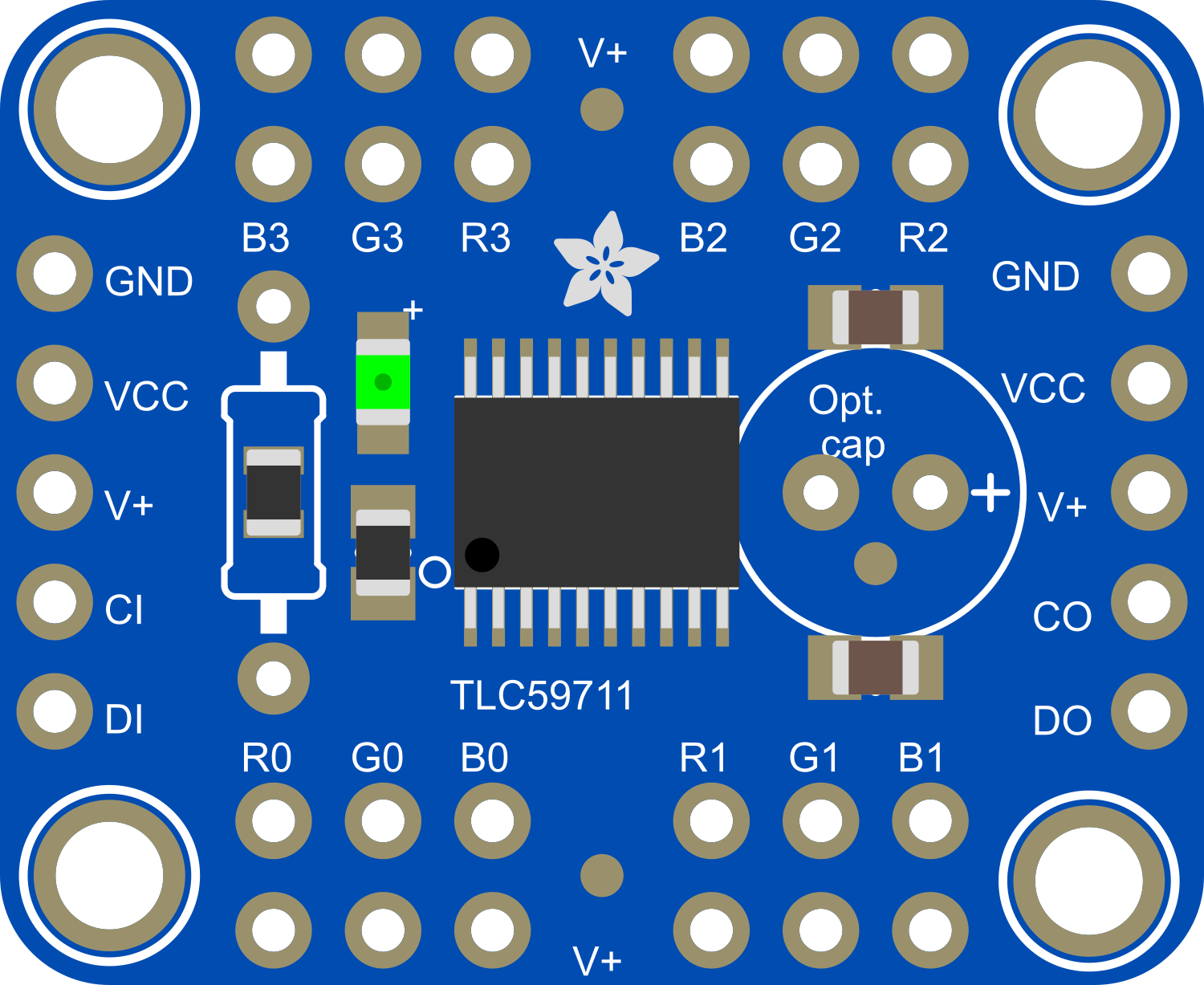
 Design with Adafruit 12-Channel 16-bit PWM LED Driver - SPI in Cirkit Designer
Design with Adafruit 12-Channel 16-bit PWM LED Driver - SPI in Cirkit DesignerIntroduction
The Adafruit 12-Channel 16-bit PWM LED Driver is an electronic component designed for controlling multiple LEDs with high precision. Utilizing the Serial Peripheral Interface (SPI) for communication, this driver can manage up to 12 individual channels, making it ideal for complex lighting projects, including architectural lighting, digital signage, and custom LED installations. With its 16-bit PWM resolution, it offers fine-grained control over the brightness and color of each connected LED, enabling smooth transitions and a wide range of dimming options.
Explore Projects Built with Adafruit 12-Channel 16-bit PWM LED Driver - SPI
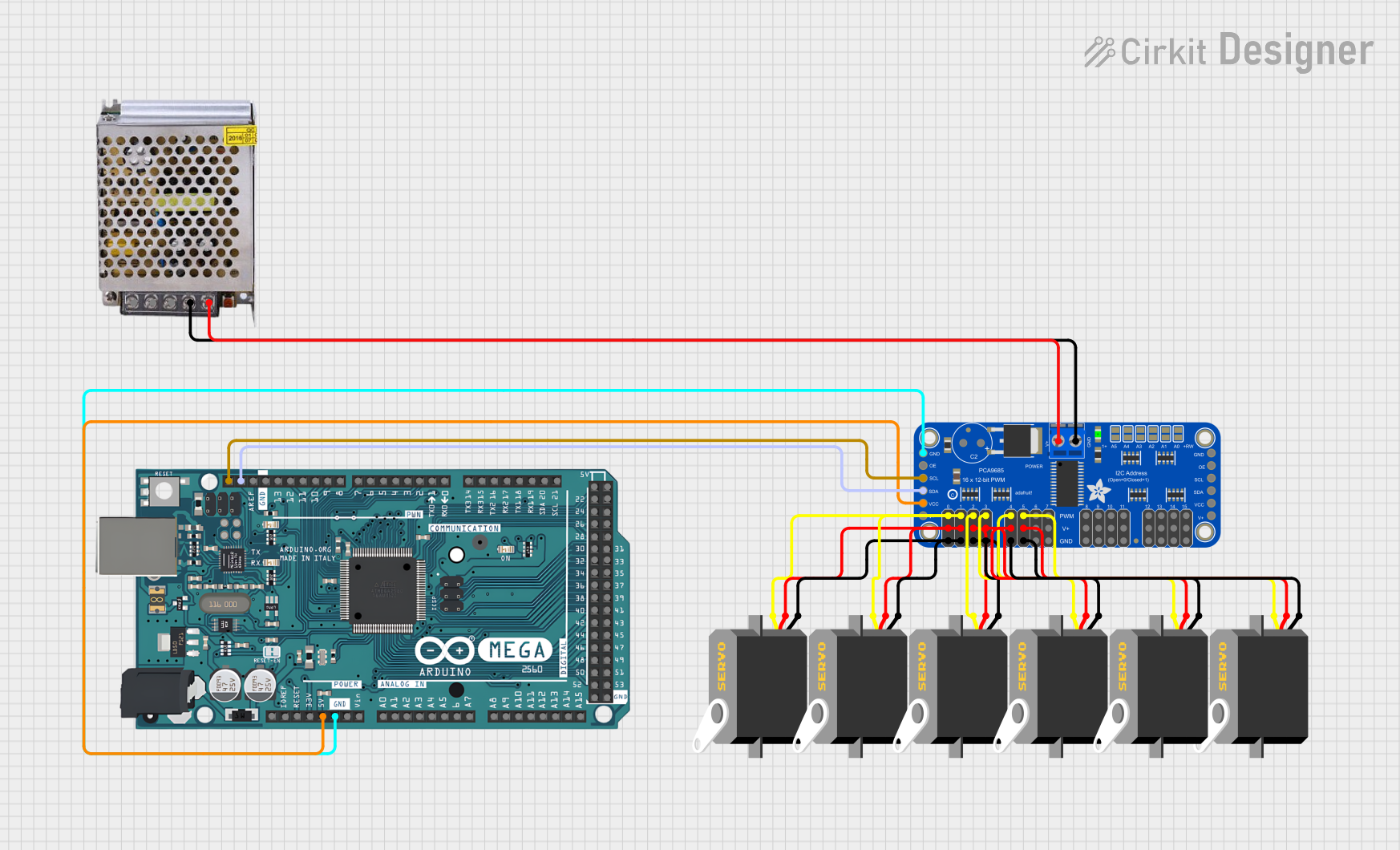
 Open Project in Cirkit Designer
Open Project in Cirkit Designer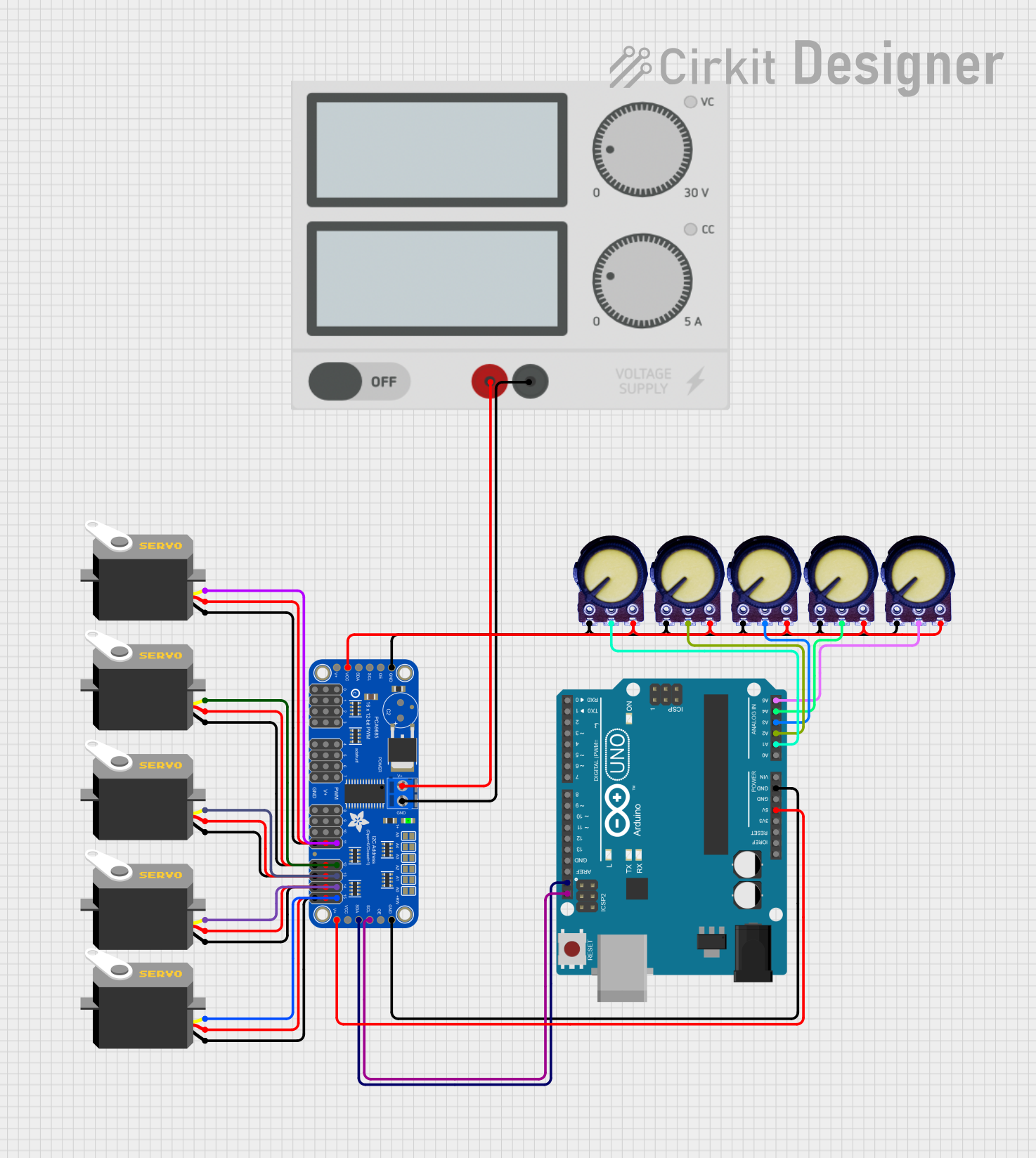
 Open Project in Cirkit Designer
Open Project in Cirkit Designer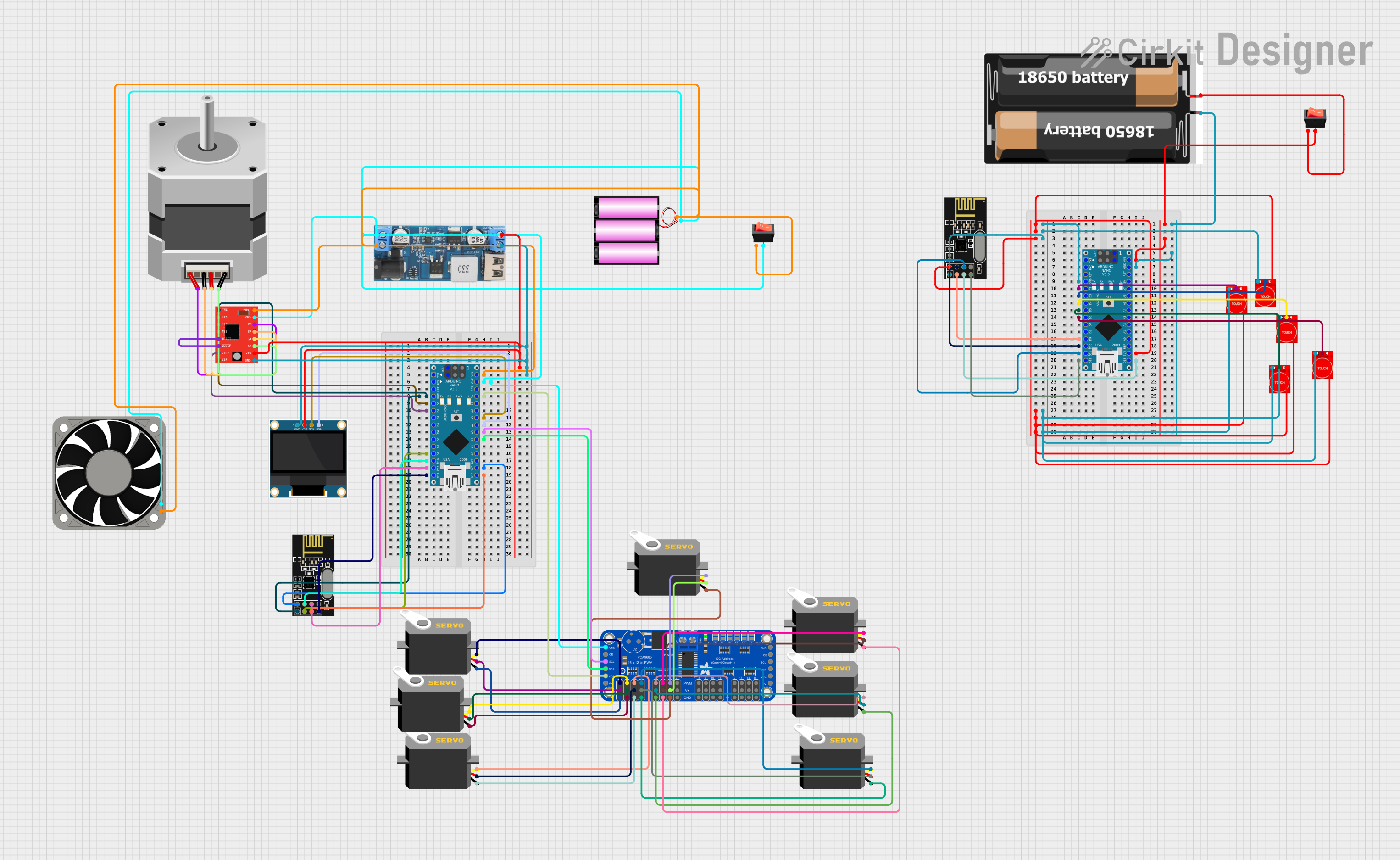
 Open Project in Cirkit Designer
Open Project in Cirkit Designer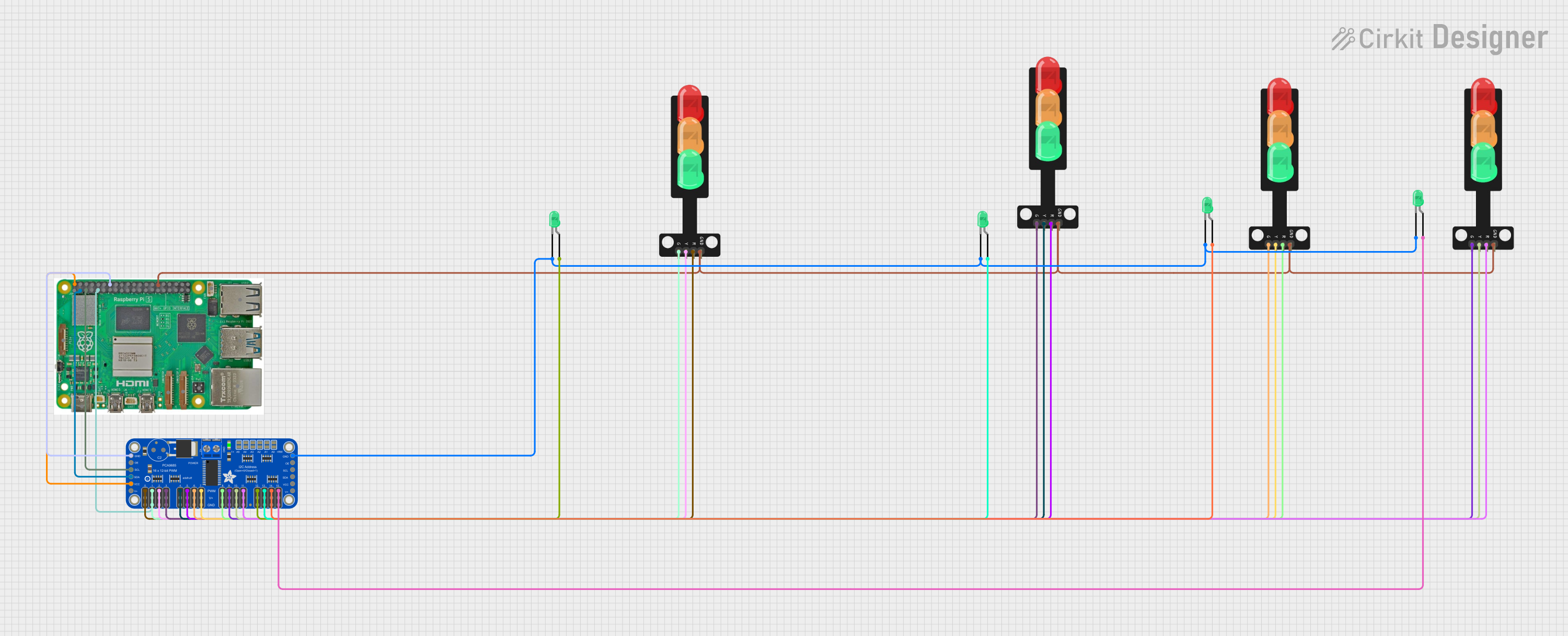
 Open Project in Cirkit Designer
Open Project in Cirkit DesignerExplore Projects Built with Adafruit 12-Channel 16-bit PWM LED Driver - SPI

 Open Project in Cirkit Designer
Open Project in Cirkit Designer
 Open Project in Cirkit Designer
Open Project in Cirkit Designer
 Open Project in Cirkit Designer
Open Project in Cirkit Designer
 Open Project in Cirkit Designer
Open Project in Cirkit DesignerCommon Applications and Use Cases
- Architectural lighting systems
- Digital signage and billboards
- Custom LED installations for art and design
- Hobbyist projects requiring precise LED control
- Prototyping for commercial lighting products
Technical Specifications
Key Technical Details
- Supply Voltage (Vcc): 2.7V - 5.5V
- Output Current per Channel: Constant current sink, 17-24 mA (adjustable)
- PWM Resolution: 16-bit (65536 levels of control)
- Communication Protocol: SPI
- Maximum Output Voltage: 17V (when Vcc = 5.5V)
- Operating Temperature: -40°C to 85°C
Pin Configuration and Descriptions
| Pin Number | Name | Description |
|---|---|---|
| 1 | VDD | Power supply (2.7V - 5.5V) |
| 2 | GND | Ground connection |
| 3 | SCLK | SPI Clock input |
| 4 | MOSI | SPI Master Out Slave In data input |
| 5 | ~OE | Output enable (active low) |
| 6 | ~LAT | Latch input (active low) |
| 7-18 | OUT0 - OUT11 | LED output channels |
| 19 | ~RST | Reset input (active low) |
Usage Instructions
How to Use the Component in a Circuit
- Power Supply: Connect the VDD pin to a suitable power supply (2.7V - 5.5V) and the GND pin to the ground.
- SPI Communication: Connect the SCLK and MOSI pins to the corresponding SPI pins on your microcontroller (e.g., Arduino UNO).
- Output Enable: Connect the ~OE pin to a digital pin on your microcontroller to enable or disable the LED outputs programmatically.
- Latch Control: Connect the ~LAT pin to another digital pin to latch the PWM data.
- LED Connection: Connect your LEDs to the OUT0 - OUT11 pins, ensuring that the LEDs' current requirements do not exceed the driver's specifications.
Important Considerations and Best Practices
- Ensure that the power supply voltage does not exceed the maximum rating of 5.5V.
- Use current-limiting resistors with your LEDs if the driver's constant current setting does not match the LED requirements.
- Avoid connecting LEDs with a forward voltage higher than the maximum output voltage of the driver.
- Implement proper heat dissipation techniques if the driver is expected to handle high currents.
Example Code for Arduino UNO
#include <SPI.h>
// Define the SPI pins for Arduino UNO
const int latchPin = 10; // ~LAT pin
const int oePin = 9; // ~OE pin
void setup() {
// Set pins to output
pinMode(latchPin, OUTPUT);
pinMode(oePin, OUTPUT);
// Begin SPI communication
SPI.begin();
// Disable output to start
digitalWrite(oePin, HIGH);
}
void loop() {
// Enable output
digitalWrite(oePin, LOW);
// Start SPI transaction
SPI.beginTransaction(SPISettings(1000000, MSBFIRST, SPI_MODE0));
digitalWrite(latchPin, LOW);
// Send PWM data for each channel (example values)
for (int i = 0; i < 12; i++) {
SPI.transfer(highByte(65535)); // Send the high byte
SPI.transfer(lowByte(65535)); // Send the low byte
}
// Latch the data onto the output pins
digitalWrite(latchPin, HIGH);
SPI.endTransaction();
// Disable output
digitalWrite(oePin, HIGH);
// Wait before updating again
delay(1000);
}
Troubleshooting and FAQs
Common Issues
- LEDs are not lighting up: Check the power supply connections, ensure that the ~OE pin is set to low to enable output, and verify that the SPI communication is correctly established.
- Flickering LEDs: This may be due to noise in the power supply or rapid toggling of the ~OE pin. Ensure a stable power supply and proper timing in the control signals.
- Uneven brightness across LEDs: Make sure that all LEDs have similar forward voltages and that the current settings are appropriate for each LED.
Solutions and Tips for Troubleshooting
- Double-check wiring and solder connections for any loose or incorrect connections.
- Use a multimeter to verify the voltage levels at the power supply and the output pins.
- Ensure that the microcontroller's code is correctly setting up and using the SPI protocol.
- If using long wires or cables, consider the effects of voltage drop and signal degradation.
FAQs
Q: Can I chain multiple LED drivers together? A: Yes, you can chain multiple drivers by connecting the MOSI output of the first driver to the MOSI input of the next driver, and so on.
Q: How do I adjust the current output for each channel? A: The current output can be adjusted through external resistors connected to the driver or by using the driver's internal registers if available.
Q: What is the maximum number of LEDs I can connect to each channel? A: The maximum number of LEDs per channel depends on the LEDs' forward voltage and the driver's maximum output voltage. Ensure the total forward voltage does not exceed the driver's limit.